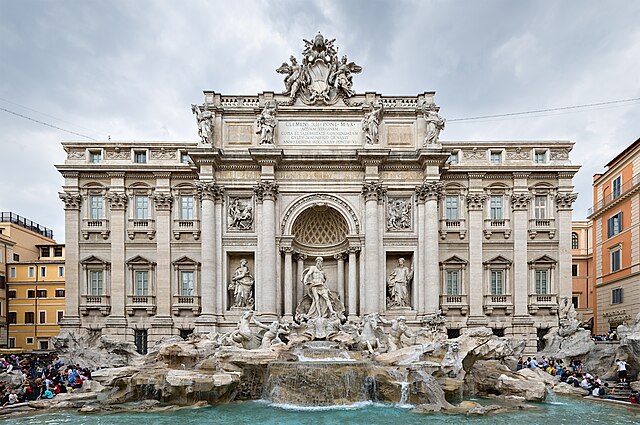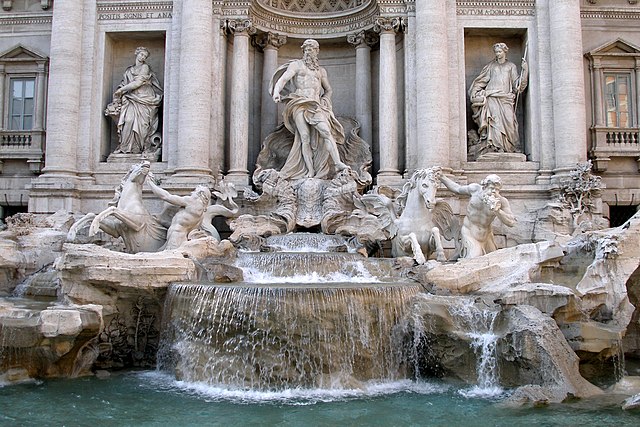The Trevi Fountain is an 18th-century fountain in the Trevi district in Rome, Italy, designed by Italian architect Nicola Salvi and completed by Giuseppe Pannini in 1762 and several others. Standing 26.3 metres (86 ft) high and 49.15 metres (161.3 ft) wide, it is the largest Baroque fountain in the city and one of the most famous fountains in the world.
Trevi Fountain
Trevi Fountain in the 18th century, painted by G. P. Panini
The fountain in Journey of a Frenchman in Italy (1769) by J. Lalande
Trevi Fountain
A fountain, from the Latin "fons", meaning source or spring, is a decorative reservoir used for discharging water. It is also a structure that jets water into the air for a decorative or dramatic effect.
(Center) Jet d'eau, (Geneva, Switzerland) Clockwise from top right (1) Fontana di Trevi (Rome) (2) Place de la Concorde (Paris) (3) Fountain in the Garden of Versailles (Versailles) (4) The Hundred Fountains, Villa d'Este (Tivoli, Italy) (5) Fuente de los Leones, (The Alhambra, Granada) (6) Fountain in St. Peter's Square (Rome) (7) Samson and the Lion fountain (Peterhof, St. Petersburg, Russia) (8) Dubai Fountain (Dubai)
An Egyptian fountain on the Temple of Dendera
Attic Greek vase from South Italy, about 480 B.C.
Hellenistic fountain head from the Pergamon museum








